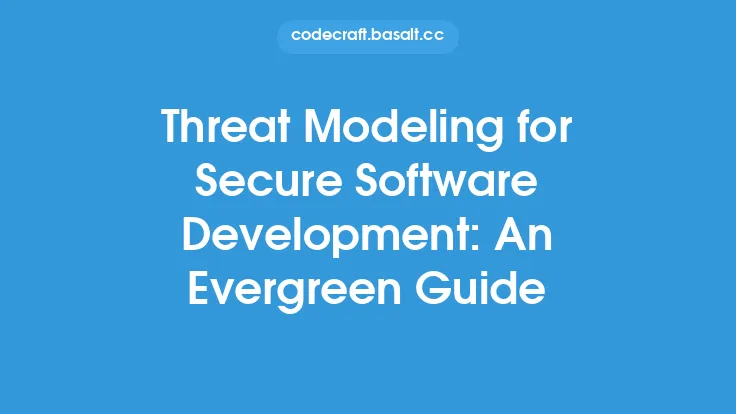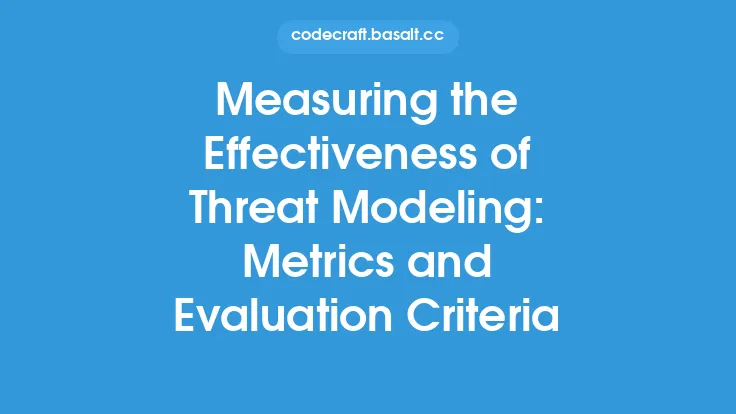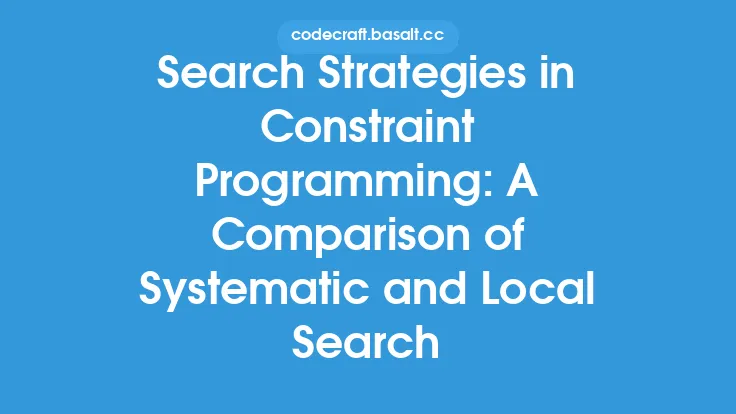Threat modeling is a crucial component of any cybersecurity strategy, allowing organizations to identify, analyze, and mitigate potential threats to their systems, data, and assets. Over the years, various threat modeling methodologies have emerged, each with its strengths and weaknesses. In this article, we will delve into a comparison of three popular threat modeling methodologies: STRIDE, PASTA, and OCTAVE.
Introduction to Threat Modeling Methodologies
Threat modeling methodologies provide a structured approach to identifying and mitigating threats. These methodologies help organizations to think like attackers, identifying potential vulnerabilities and weaknesses in their systems. By using a threat modeling methodology, organizations can develop a comprehensive understanding of their threat landscape, prioritize their security efforts, and make informed decisions about resource allocation. STRIDE, PASTA, and OCTAVE are three widely used threat modeling methodologies, each with its unique approach and focus.
STRIDE Threat Modeling Methodology
STRIDE (Spoofing, Tampering, Repudiation, Information Disclosure, Denial of Service, and Elevation of Privilege) is a threat modeling methodology developed by Microsoft. STRIDE is a simple, yet effective methodology that focuses on identifying threats to an organization's assets. The STRIDE methodology categorizes threats into six categories, each representing a specific type of threat. By using STRIDE, organizations can identify potential threats to their assets, prioritize their security efforts, and develop effective mitigation strategies. STRIDE is a widely used methodology, particularly in the software development industry, due to its simplicity and ease of use.
PASTA Threat Modeling Methodology
PASTA (Process for Attacking Security Threats) is a threat modeling methodology that focuses on identifying and mitigating threats to an organization's assets. PASTA is a risk-based methodology that takes into account the likelihood and impact of potential threats. The PASTA methodology involves seven steps: defining the scope, identifying assets, identifying threats, analyzing threats, prioritizing threats, mitigating threats, and validating mitigation strategies. PASTA is a comprehensive methodology that provides a detailed approach to threat modeling, making it a popular choice among organizations that require a thorough understanding of their threat landscape.
OCTAVE Threat Modeling Methodology
OCTAVE (Operationally Critical Threat, Asset, and Vulnerability Evaluation) is a threat modeling methodology developed by the CERT Division of the Software Engineering Institute. OCTAVE is a risk-based methodology that focuses on identifying and mitigating threats to an organization's critical assets. The OCTAVE methodology involves three phases: identification of critical assets, identification of threats, and mitigation of threats. OCTAVE is a comprehensive methodology that provides a detailed approach to threat modeling, making it a popular choice among organizations that require a thorough understanding of their threat landscape.
Comparison of STRIDE, PASTA, and OCTAVE
While STRIDE, PASTA, and OCTAVE are all threat modeling methodologies, they differ in their approach, focus, and complexity. STRIDE is a simple, yet effective methodology that focuses on identifying threats to an organization's assets. PASTA is a risk-based methodology that takes into account the likelihood and impact of potential threats. OCTAVE is a comprehensive methodology that provides a detailed approach to threat modeling. The choice of methodology depends on the organization's specific needs, the complexity of their systems, and the level of detail required.
Advantages and Disadvantages of Each Methodology
Each threat modeling methodology has its advantages and disadvantages. STRIDE is a simple and easy-to-use methodology, but it may not provide the level of detail required by some organizations. PASTA is a comprehensive methodology that provides a detailed approach to threat modeling, but it can be time-consuming and resource-intensive. OCTAVE is a risk-based methodology that provides a detailed approach to threat modeling, but it requires a significant amount of expertise and resources. The choice of methodology depends on the organization's specific needs and the level of detail required.
Conclusion
Threat modeling is a crucial component of any cybersecurity strategy, and the choice of methodology depends on the organization's specific needs and the level of detail required. STRIDE, PASTA, and OCTAVE are three popular threat modeling methodologies, each with its strengths and weaknesses. By understanding the advantages and disadvantages of each methodology, organizations can make informed decisions about which methodology to use and how to implement it effectively. Ultimately, the goal of threat modeling is to identify and mitigate potential threats, and the choice of methodology is a critical component of this process.





